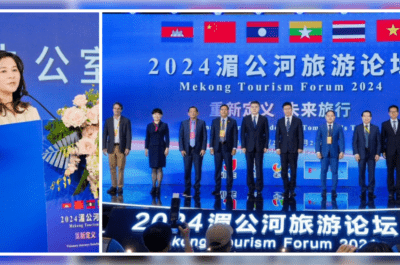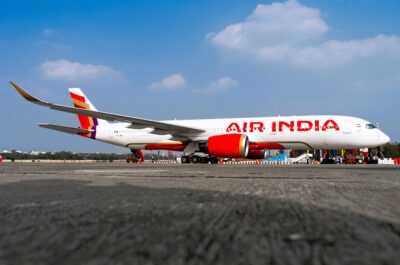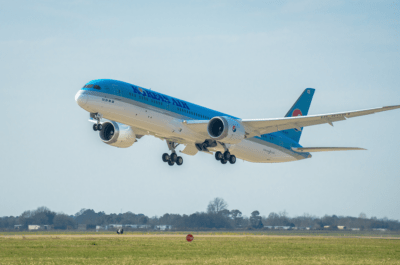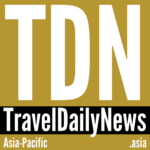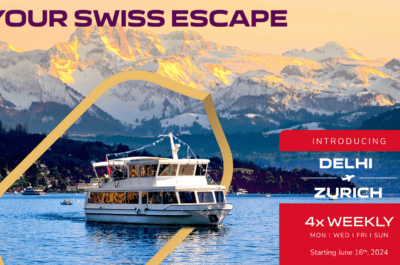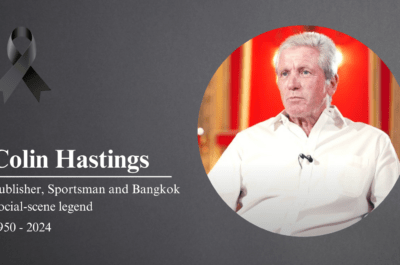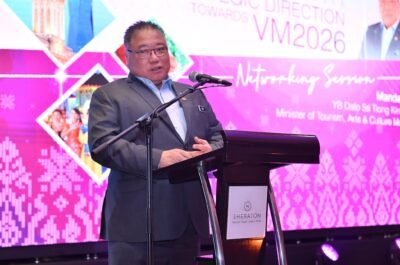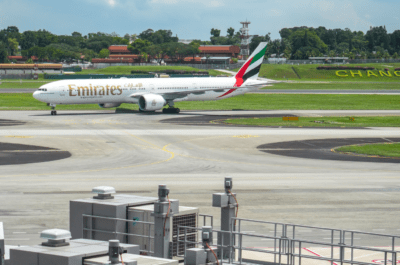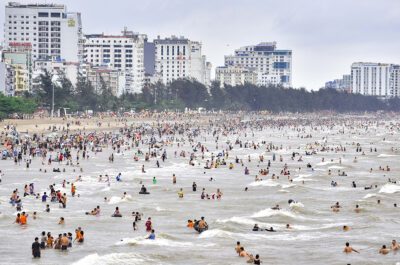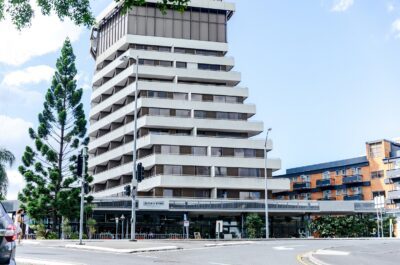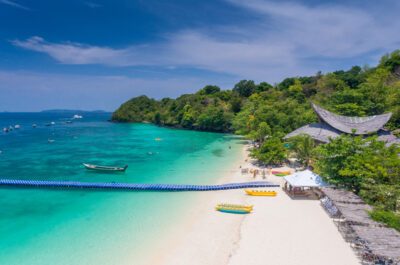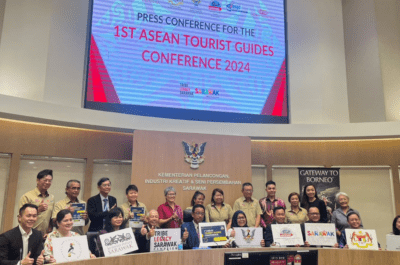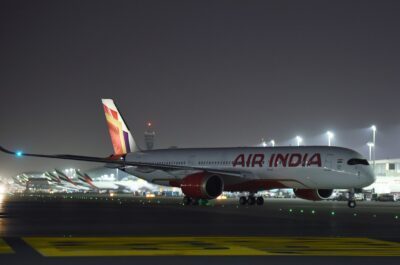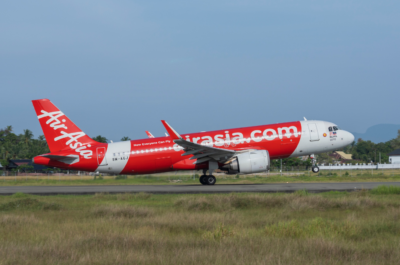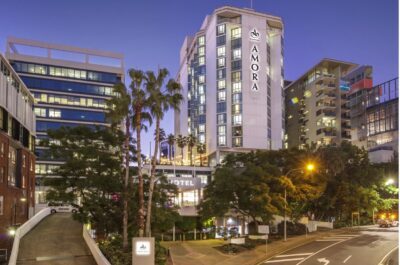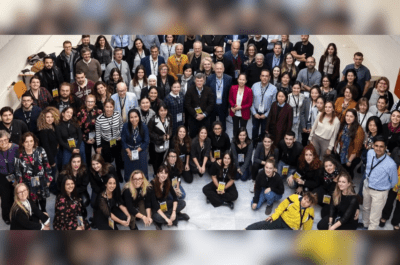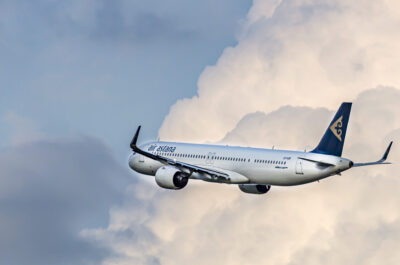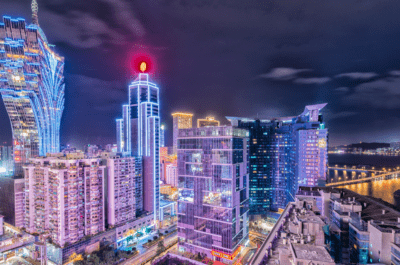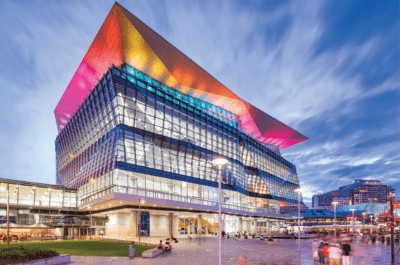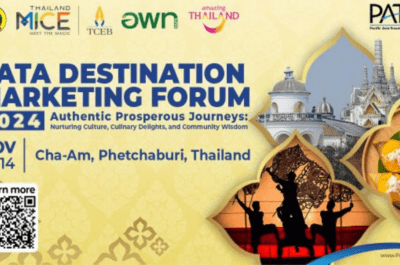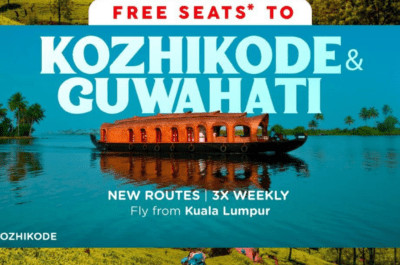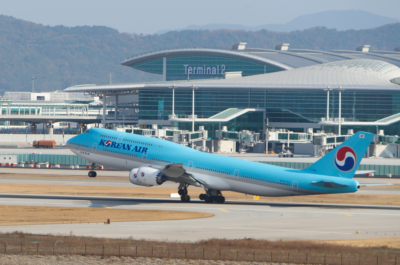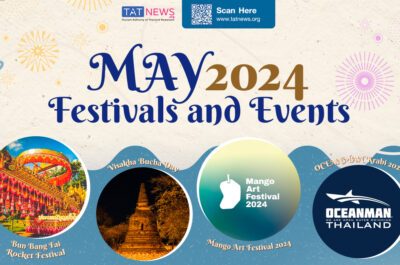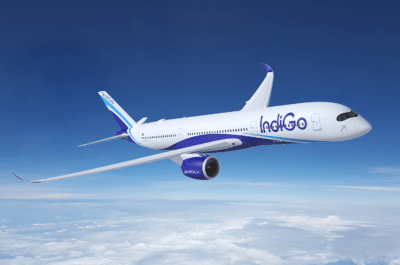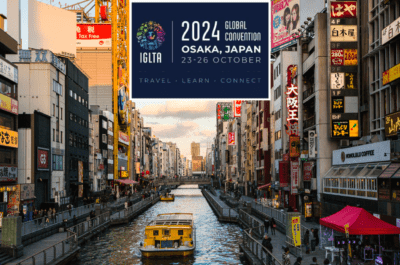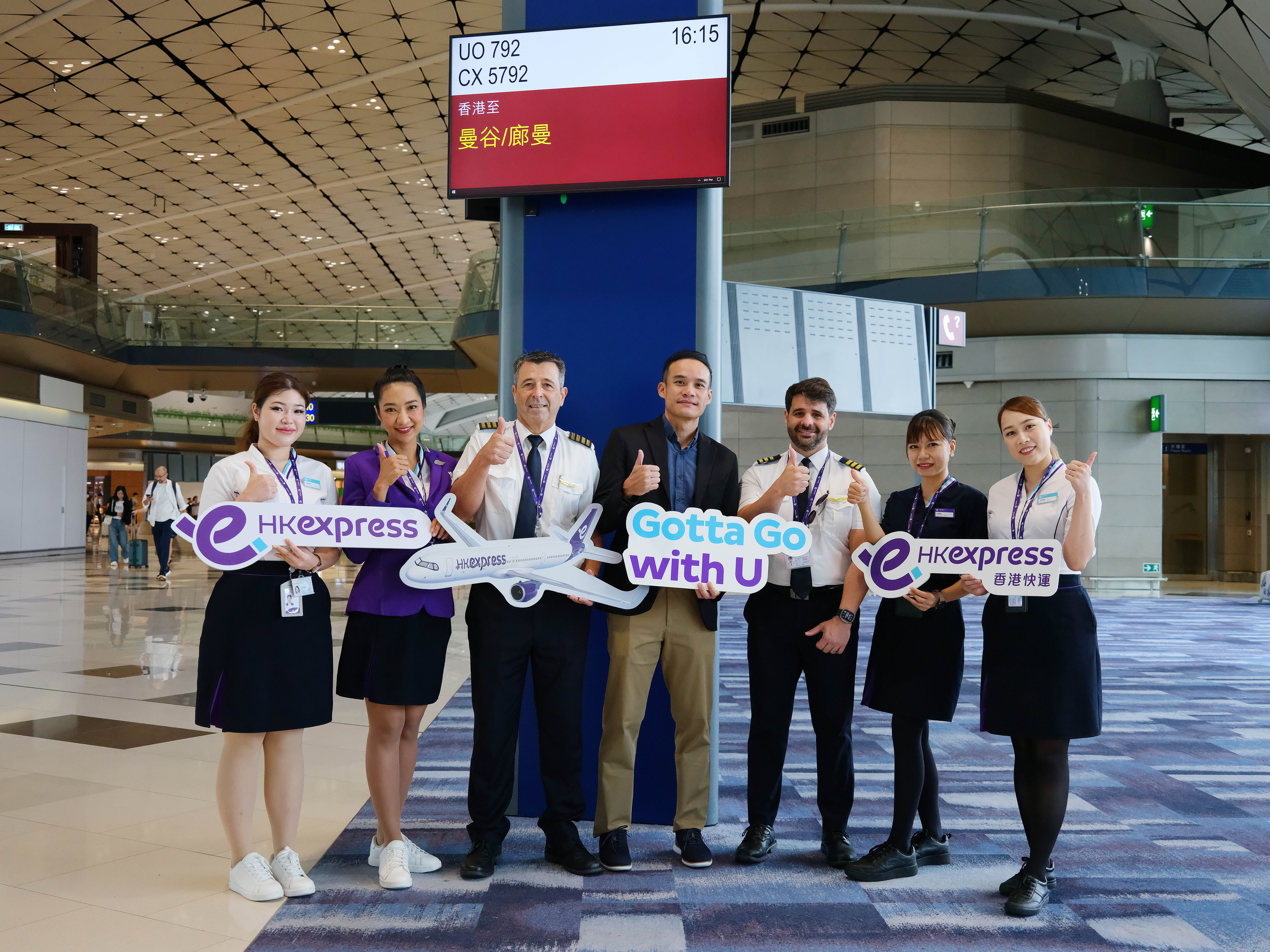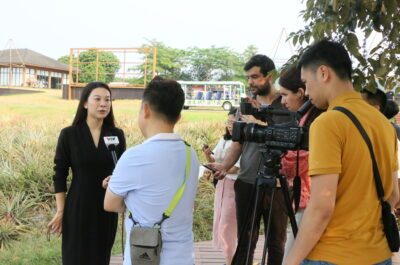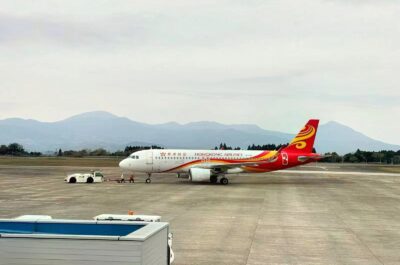…
 After China (PRC) and India, the outbound market offering significant potential for the PATA region is the Russian Federation. It has a large population of nearly 150 million, and a huge geographical spread across 17,075,200 sq kms, extending from Asia to Europe. The Russian Federation’s cultural diversity, ongoing shift to a market economy, abundance of natural resources, freezing cold winters and largely landlocked status provide the underlying foundation for strong outbound travel, especially in pursuit of warmth, sun, sea and sand.
After China (PRC) and India, the outbound market offering significant potential for the PATA region is the Russian Federation. It has a large population of nearly 150 million, and a huge geographical spread across 17,075,200 sq kms, extending from Asia to Europe. The Russian Federation’s cultural diversity, ongoing shift to a market economy, abundance of natural resources, freezing cold winters and largely landlocked status provide the underlying foundation for strong outbound travel, especially in pursuit of warmth, sun, sea and sand.
Russians are no strangers to PATA countries. During the Cold War, Russians of the former Soviet empire were frequent visitors to allied countries, such as Vietnam, as well as others, such as India. The beaches of Goa and Vietnam were popular destinations for communist cadres and technical and military personnel. Even national tourism organisations (NTOs) in some PATA countries, such as Vietnam, were modelled on the former Soviet inbound agency, “Intourist”, when they first began opening up to tourism.
The trickle of Russian outbound travel expanded after the Cold War, the fall of the Berlin wall and the collapse of the Soviet Union in December 1991. In the early 1990s, Russians travelled mainly due to economic need. Financial turmoil, currency problems and the shortage of goods in the country prompted Russians to travel as ‘traders’ to bring back foreign products to Russia. A minority of people became extremely rich.
When restrictions on outbound travel were lifted in 1992, Russia’s newly rich began travelling for leisure. Until 1998, most of the outbound travel was in the form of group tours with an average duration of one week. Because the Russian banking system was not fully developed or accepted worldwide, cash payments predominated.
Today, Russian travel abroad for holidays, business, study and conventions is on the rise. In 2002, the country generated an estimated 12 million outbound travellers of whom a little over five million travelled beyond Commonwealth of Independent States (CIS) countries. Scheduled and charter airline contacts are increasing, as is purchasing power. If the present growth rates continue, Russia may become the 10th largest outbound travel market by 2010.
There is also a huge emerging outbound market from the CIS, which comprises the Russian Federation plus the Ukraine, Belarus, Moldova, Georgia, Azerbaijan, Armenia, Kazakhstan, Uzbekistan, Kyrgyzstan, Turkmenistan and Tajikistan. This edition of Issues & Trends, however, will only focus on the Russian outbound market.
ECONOMIC SITUATION
The Russian economy’s average annual growth of more than 6% between, 1999-2002, was on the back of higher oil prices and the 60% depreciation of the rouble in 1998. This growth, and renewed efforts to advance lagging structural reforms, has raised business and investor confidence in Russia’s second decade of transition.
Oil, natural gas, metals and timber account for more than 80% of Russia’s exports. The prices of oil and gas on international markets have allowed the Russian government to increase its gold and hard currency reserves. The government has also revamped tax regimes to boost the private sector’s role in economic development.
Due to inflation and a large underground economy, Russians prefer to spend their money rather than to save it. Travelling abroad is less expensive and considered more elitist and safe than travelling domestically. Said the organisers of the Moscow International Travel Fair: “Russian clients spend more money (twice as much as Europeans) in resorts than any other nationality, and this is mostly cash!”
MARKET SIZE
While more than 12 million Russians travel out of the Russian Federation every year, in 2002, the total number of leisure travellers who went beyond CIS countries totalled 5,044,305. According to figures compiled by the Tourism Authority of Thailand’s marketing consultant in Russia, only three Asia Pacific nations made it into the top 20 tourism destinations for Russian travellers in 2002; China (PRC), Thailand and Korea (ROK).
MARKET SEGMENTS
Like other travellers, Russians are conscious of safety issues, especially related to terrorism. While most middle class travellers want moderate prices for land arrangements and airfares, an increasing number of them are big spenders.
According to the organisers of the Moscow International Travel Workshop,
Russian market segments are clearly identifiable:
Mass tourism, generally to destinations within four hours flying time from Russian airports, operates mostly on block-charters or budget programmes. These segments are ideally suited for resorts in countries with relaxed visa policies and can generate substantial numbers of clients with money to spend.
Niche travel markets, which many Russian travel companies are already beginning to tap, include family, health, shopping, diving and golf. Family tours have become most popular during summer (July-August) and winter (December-February) school vacations. Health and spa package tours are increasingly popular among high-income tourists from major Russian cities. Shopping package tours to buy quality goods at low or discounted prices are popular among people from the Siberian and Far East federal regions. Diving tours to Southeast Asia are becoming popular among travellers from Moscow, St. Petersburg, Novosibirsk and Vladivostok. Golf travel is one of the fastest growing sectors, especially among business people, who treat golf courses as venues for deal making. Russian golfers are usually wealthy clients looking for high quality travel arrangements to golfing destinations worldwide. Golf-related incentive travel is also set to start.
Exotic destinations continue to grow in popularity among Russian business tycoons. A high-priced vacation in an exotic location is high on their list of spending priorities
MICE is another rapidly emerging segment. A recent survey indicates that it will soon be a multibillion-dollar niche market if economic growth continues
City tourism has massive growth potential. As air connections to major international cities become easier and more frequent, many Russian tour companies are looking to develop city holiday packages.
Business travel among Russians is growing along with the Russian economy. According to Tourism Marketing Intelligence, business travellers from Russia to outside the CIS countries rose from 317,000 in 1998 to 481,000 in 2001.
THE TRADE
Since 2002, there has been a growing concentration of tourism business with big tour operators in Moscow, St. Petersburg, other federal centres (Nizhniy Novgorod, Rostov-na-Donu, Ekaterinburg, Novosibirsk and Khabarovsk) and several main Russian cities (Irkutsk, Krasnoyarsk, Kazan, Samara and Vladivostok). The same situation is transpiring in other CIS countries.
The big tour operators are strengthening their position in the primary tourism and transport centres (8-10 companies control 30-40% of total volume in Moscow and other cities). Medium and small travel companies are becoming the travel agents of main tour operators.
A number of travel fairs have emerged to promote outbound tourism. These include MITT and Leisure (in Moscow), CIS Travel Market (in St. Petersburg), TourSib (in Novosibirsk), UITT (in Kiev, Ukraine), KITF (in Almaty, Kazakhstan), TITF (in Tashkent, Uzbekistan), Ukraine (in Kiev), Balttour (in Riga, Latvia), AITF (in Baku, Azerbaijan) and TourEst (in Tallinn, Estonia).
Most of them take place in March (to catch the summer outbound market) and October (for the winter market). They have become a prime sales opportunity for Russian companies to sell to sub-agents and to the public. One show has inaugurated a winter workshop in September 2004 and another in February 2004 to help Russian travel companies start early to plan their winter and summer programmes.
Asia Pacific tourist boards are recognising the potential of the Russian market. In 2001, Korea (ROK) and Malaysia opened representative offices in Russia while countries such as Singapore increased their presence in the market by working through PR companies to boost media coverage.
COMPETITOR ANALYSIS
While the short-haul destinations of Europe are natural destinations due to strong historical and cultural links, the main competitors for the PATA region are the Middle East countries, especially for the sun-and-beach market. Egypt heavily markets its winter holidays on the Red Sea (Hurghada, Sharm-El-Sheikh) with sightseeing tours to Cairo and Luxor and diving packages with prices starting from US$300, including air, for seven days. Egypt has a full-time office in Moscow and provides extensive media and industry support directed at both the trade and consumers. In 2003, Egypt’s tourism promotion budget for Russia and CIS was about US$6 million. In 2002, about 300,000 tourists from Russia and CIS countries visited Egypt.
Turkey markets its relatively milder summer holidays on the Anatolian coast of the Mediterranean Sea, with package tours of 7-21 days duration priced from US$200 including air ticket and “all-inclusive” hotels and resorts. Turkey also provides extensive collateral support for trade and media and has a full-time office in Moscow. In 2003, its budget for Russia and CIS was about US$9 million. In 2002, arrivals from Russia totalled 800,000. More than 200,000 visitors arrived from the CIS.
In recent years, the United Arab Emirates (Dubai) has also fought for a share of Russia’s winter holiday market. This manifested itself in July 2003, with thrice-weekly Emirates flights to Moscow. The Dubai Department of Tourism & Commercial Marketing (DTCM) has an office in Moscow and conducts year-round campaigns of media promotions, advertising, familiarisation trips and road shows. Its 2003 budget was about US$2 million. Tour prices for seven days start as low as US$300 including air. Dubai’s shopping possibilities are an attraction and the DTCM has been working to attract the Russian MICE market. In 2002, arrivals to Dubai totalled 200,000 from Russia and 40,000 from the CIS.
AIRLINES AND AVIATION
The aviation capacity shortage to the PATA region is a major impediment, but as with all emerging destinations, the situation is improving. Leading airports in Russia, by passenger volume, are Sheremetevo (Moscow), Domodedovo, Pulkovo, Vnukovo, Tolmachyovo (Novosibirsk), Koltsovo (Ekaterinburg), Yemelyanovo (Krasnoyarsk), Krasnodar, Kurumoch (Samara) and Surgut. After the creation of the Russian Federation, each of the federal states started their own airlines, which are seeking potential destinations in the PATA region.
Airline links between Russia, especially the Ural, Siberian and Far East regions, and the northeast PATA countries such as China (PRC), Japan and Korea (ROK) are much better than with South Asia or Southeast Asia. Links to Australia and New Zealand are still many years away. Aeroflot Russian Airlines has an extensive network of flights from Moscow to Bangkok, Beijing, Hanoi, Harbin, Ho Chi Minh City, Hong Kong, Kuala Lumpur, Manila, Niigata, Seoul, Shanghai, Shenyang, Singapore, Tokyo and Ulan Bator.
Airlines from Northeast Asia and South Asia have good connections to Russia; however, no major Southeast Asian airline has flights to Moscow, although THAI is planning a link in 2005. The inauguration of flights to Moscow by Emirates in July 2003 and Qatar Airways in August 2003 will help boost Russian traffic to the PATA countries. Both airlines have extensive networks in Asia Pacific, which they will want to attract Russians to via their respective hubs in Dubai and Doha.
Currently a significant proportion of capacity to the PATA region is coming in the form of charters operated by Russian carriers, as a prelude to starting scheduled flights once the route becomes commercially viable. Other Russian airlines, such as Vladivostok Air, are working out interline agreements with Southeast Asian carriers to carry passengers via points in Northeast Asia.
VISA RESTRICTIONS
As in the case of India and China (PRC), visa bottlenecks will be the biggest issue in the future. Countries that currently allow visa exemption or visa on arrival facilities for Russians are Malaysia, Turkey, UAE, Czech Republic, Bulgaria, Hungary, Egypt, Cyprus, Poland, Vietnam, China (PRC), Mongolia, Thailand, Cambodia and Lao PDR. However, due to concerns about the influx of less desirable travellers, illegal immigrant workers and criminal syndicates, some countries, especially in Western Europe, have tightened visa regulations for Russians. These countries now require Russians to produce a formidable set of documentation to justify getting a visa. The visa issue will need addressing if full market potential is to be realised.
FUTURE POTENTIAL
Russia is following the path of all emerging markets. First to arrive are the flag-led package tours of 7-14 days duration. These target first-time travellers eager to see new places and get a brief respite from the cold winters. Over time, the market matures into independent travel and niche segments. The emerging market’s growing economy offers a larger business travel market, including increasing numbers of convention delegates and technical personnel.
Like India and China (PRC), the Russian market has the potential to become a major player in the growing trend towards intraregional travel. Money is pouring into the economic development of the Russian Federation’s Ural, Far East and Siberian regions. These regions have important seaports, including Vladivostok and Khabarvosk, and should become major generators of visitors to PATA destinations in South Asia, Southeast Asia and Oceania.
In terms of product, there is no shortage. As the market grows and aviation access improves, PATA-region NTOs are researching the Russian market, investing in promotion, setting up Russian language websites, introducing Russian language collateral, offering familiarisation trips and educationals and packaging product more in line with the evolving needs of Russian travellers. As the market continues to open up, however, Asia Pacific NTOs will still need to continue to work hard at addressing software issues, such as the provision of Russian speaking guides and staff.
TravelDailyNews Asia-Pacific editorial team has an experience of over 35 years in B2B travel journalism as well as in tourism & hospitality marketing and communications.


